By Adam Pagnucco.
MCPS Superintendent Thomas Taylor doesn’t believe in small things. Just look at his first recommended operating budget, which asked for one of the largest increases in MCPS history. He got almost all of it, in large part by teaming up with his employee unions. But now he is back for much more, as wary politicians gasp at his audacity.
Will he get it?
This series will explore Taylor’s recommended capital budget and how the county might pay for it. Before getting into the details, let’s start with the broad themes of Taylor’s narrative.
In the last six-year capital budget (FY25-30 amended), MCPS was due to receive $1.76 billion, or 29% of the county government’s total capital budget. Taylor believes the system’s needs total $5.15 billion. Compare that to the size of the county’s total capital budget, which was $5.98 billion in its last iteration. Taylor knows he could never get that much money, so his recommendation is $2.7 billion, a 54% increase.
Here’s a reasonable question. MCPS’s enrollment is declining. So why does it need a huge capital increase?
Taylor addressed that question directly in his presentation on October 13. After noting the county’s substantial population growth since 1990, he pointed out the declining percentage of households with children under the age of 18. He then noted that enrollment is forecasted to decline even more since its pre-pandemic peak. Consider the two slides below.
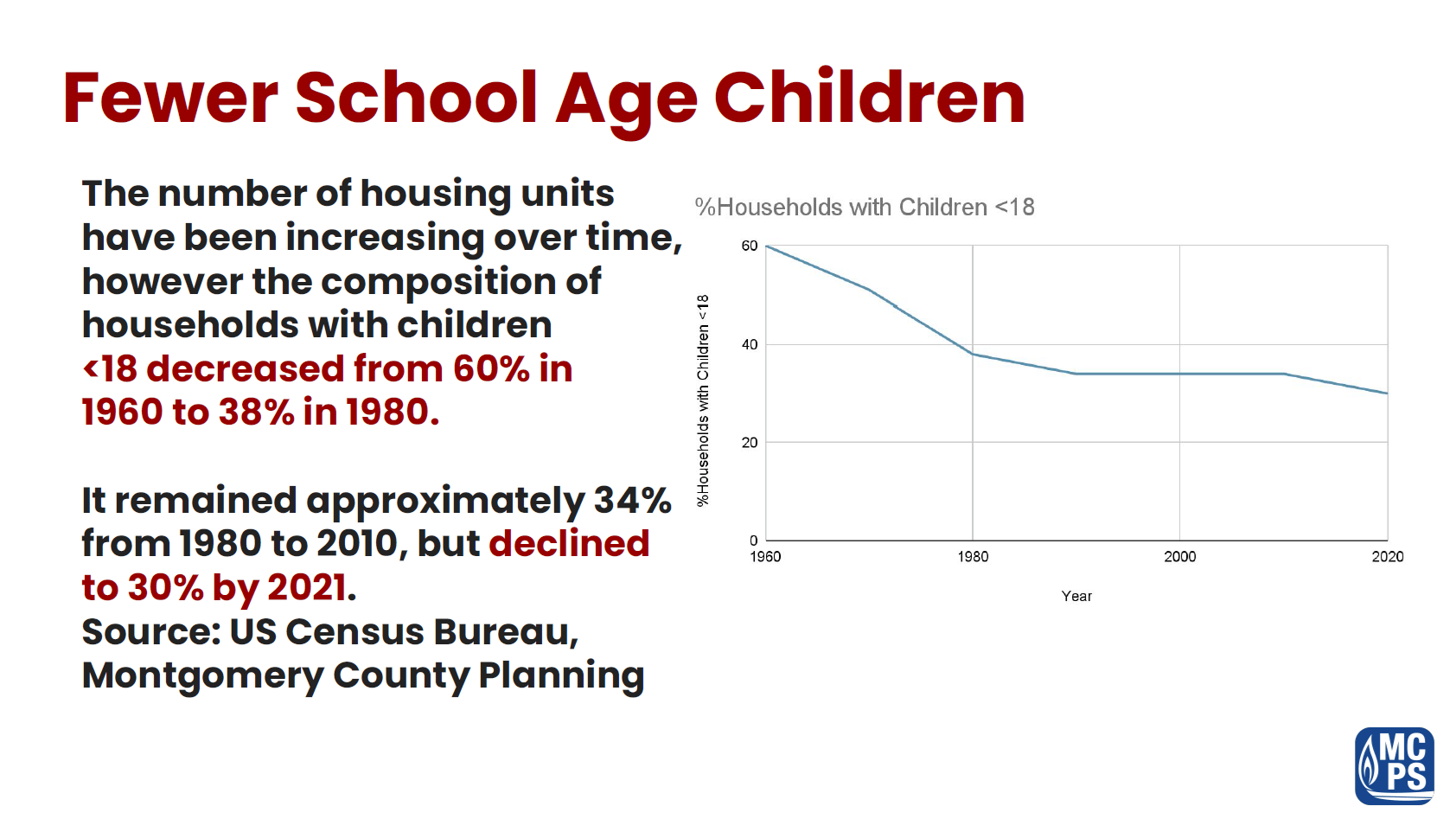
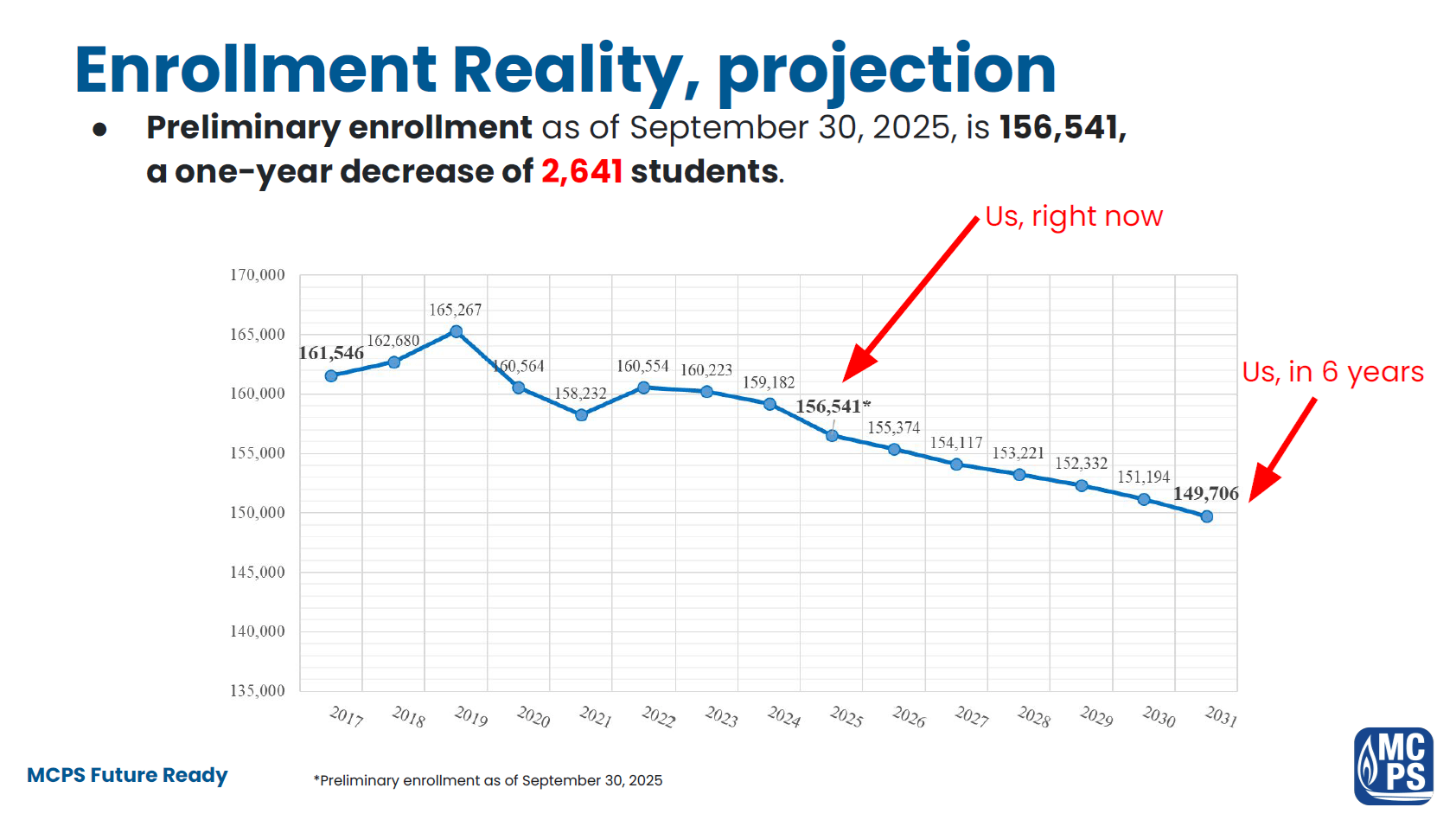
MCPS has seen a nearly continuous period of rising enrollment since the early 1980s, causing it to build or reopen dozens of schools. Taylor calls this “chasing capacity” and said it made sense at the time. But it created a much larger portfolio of buildings which are aging today. Taylor illustrated this in the slide below.
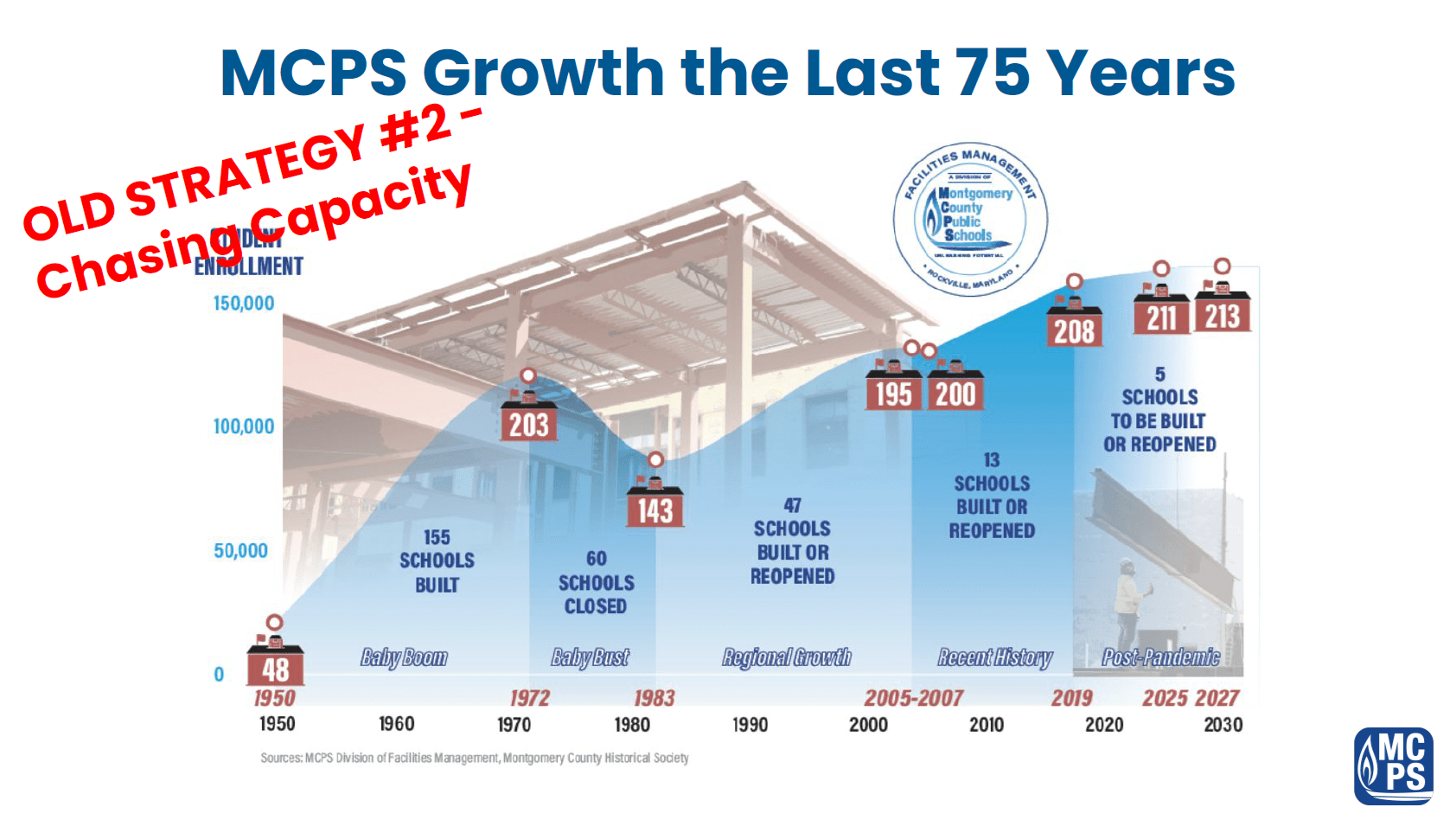
The consequence of the building wave of yesteryear is an awful lot of old buildings. According to Taylor, 162 facilities – two-thirds of MCPS’s portfolio – are over 25 years old.
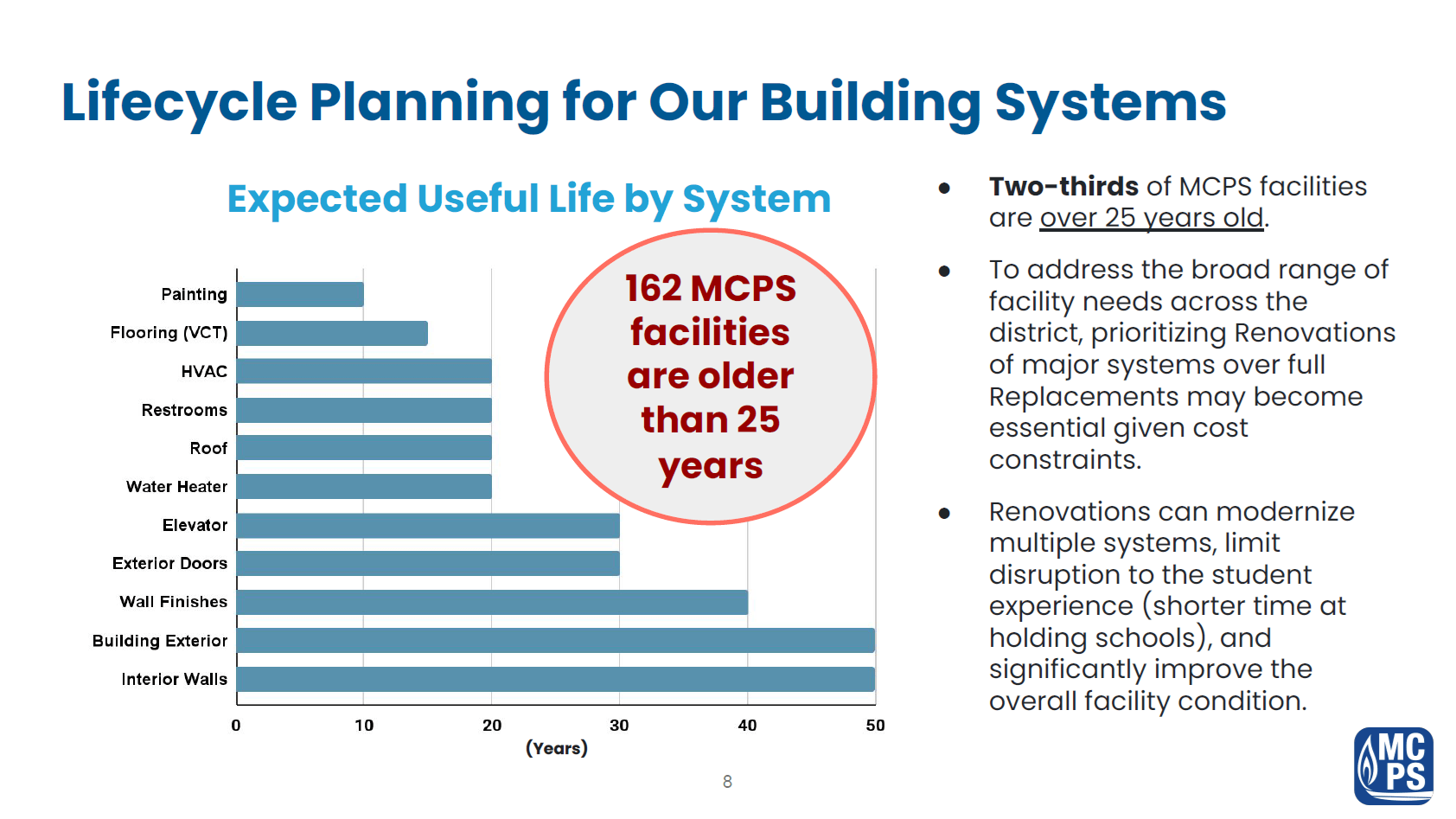
Taylor gets more specific later in the presentation. Of the system’s 137 elementary schools, 82 are 26-50 years old and 7 are more than 50 years old. Of the system’s 65 secondary schools, 31 are 26-50 years old and 6 are more than 50 years old. Over the next 20 years, Taylor believes MCPS must renovate, renew or replace 6-7 elementary schools and at least 2 secondary schools every year.
That is the biggest long-term driver of MCPS’s capital needs.
Of course, there is more. MCPS is notorious for mold infestations in schools like New Hampshire Estates ES, where the PTA president famously declared, “Every single staff member and student is breathing in mold, and has been for years.” Taylor contends that MCPS should replace twelve HVAC systems every year. Last year, the system replaced five.
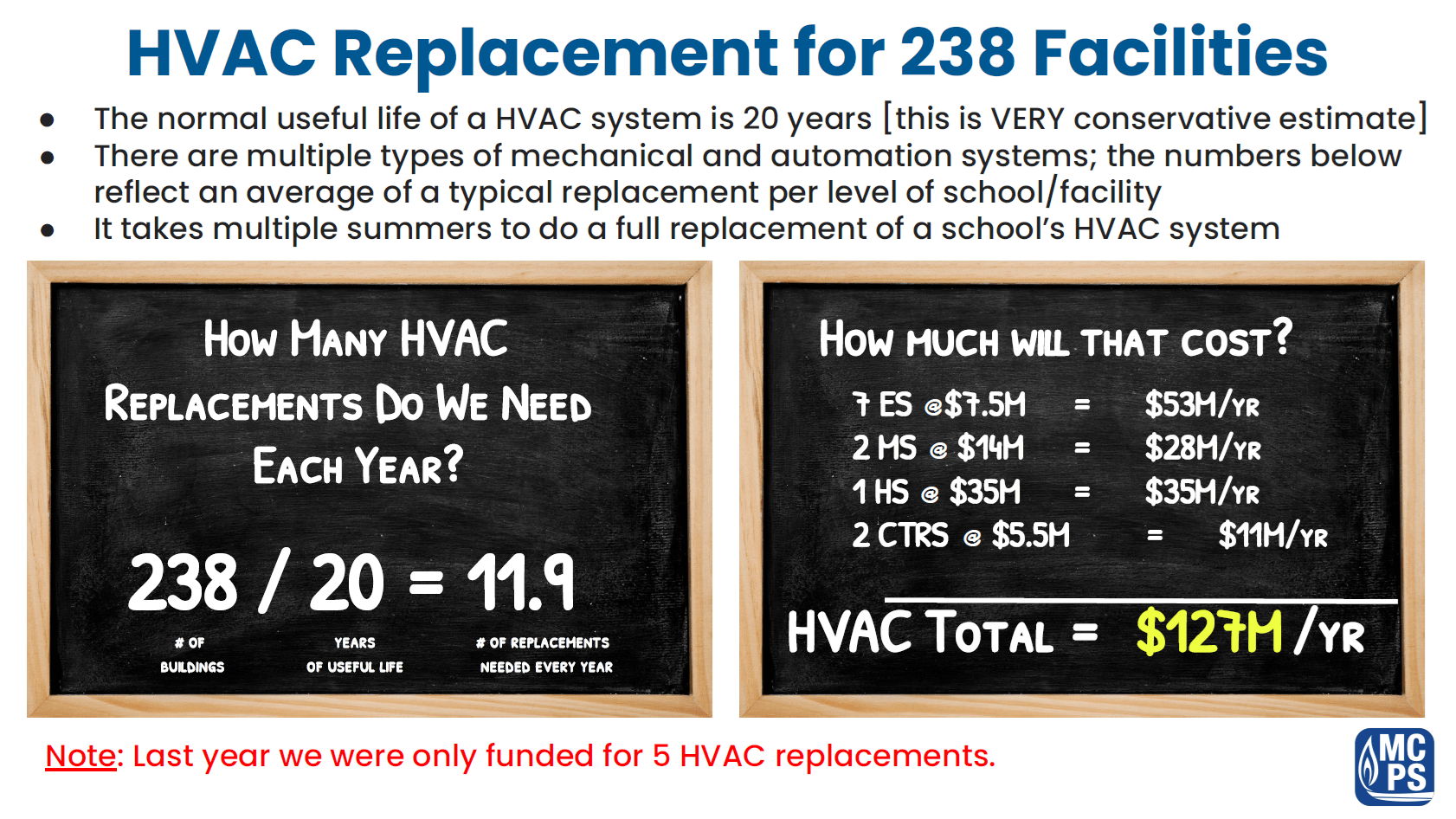
Taylor’s presentation goes on for 100 slides(!), every one conjuring specters of price tags. But in this next one, Taylor admits that his request will not be easy to fund. He says point blank that “County and State funding still cannot meet full demand,” and takes aim at the county’s cap on general obligation (G.O.) bonds, the largest single funding source in the county’s capital budget. He states, “County Spending Affordability Guidelines (SAG) sets yearly GO Bond spending caps for all MoCo agencies. Currently SAG at $1.8B or $300M annually, which is not able to meet all county needs. Not even close.”
If that sounds like a challenge to county politicians, it is.
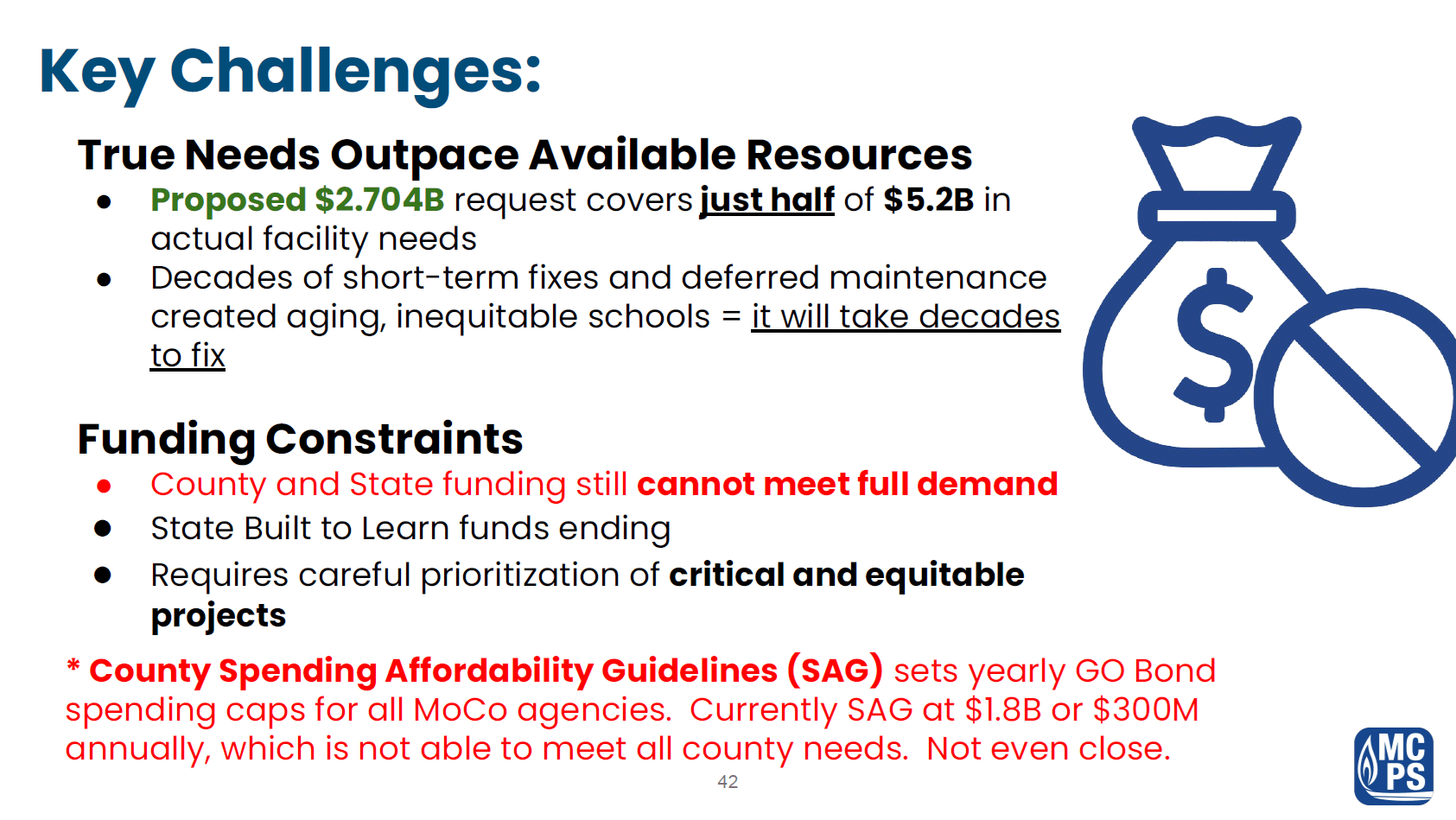
Taylor is a diplomatic fellow. He avoids confrontational rhetoric. But for those of you who speak New York-ese, Blogger-ese, In-your-face-ese or any of my other native languages, here is a translation of what he is saying. It’s essentially the same translation of what he said in last year’s operating budget debate.
MCPS is in a big mess that took many years to create. You hired me to clean it up. I’ll do it, but I need time and money. Are you politicians going to come up with those things or not?
We will have more on Taylor’s ask in Part Two.
